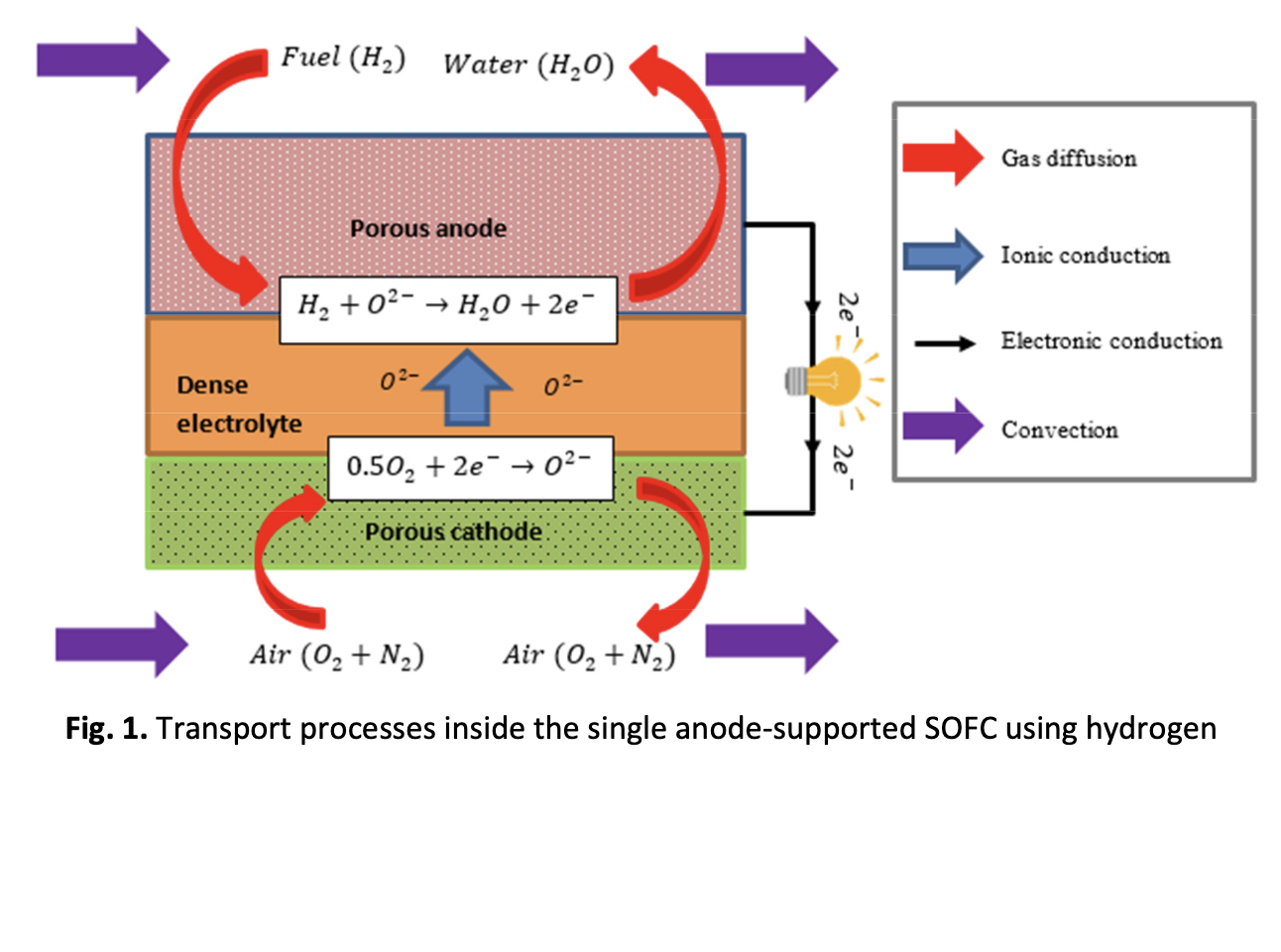Overview of Computational Fluid Dynamics Modelling in Solid Oxide Fuel Cell
Keywords:
solid oxide fuel cell, computational fluid dynamics, modelling, performance analysisAbstract
Owing to the complexity and high cost of solid oxide fuel cell (SOFC) experiments, computational fluid dynamics (CFD) simulation is frequently performed for SOFC analysis. This paper provides an overview of the application of CFD modelling for the development of SOFC performance analysis. First, CFD modelling, materials and flow properties and boundary conditions required for modelling are discussed on the basis of our understanding of transport processes in SOFC. Available CFD software and models for SOFC analysis are then listed, and their applications are discussed. Finally, advancement in CFD modelling application is addressed to understand the CFD modelling ability.
Downloads




























